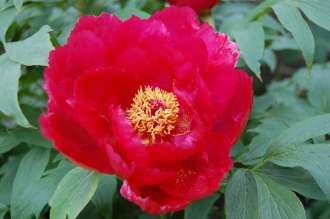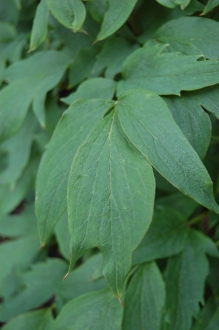Position: Partial shade
Flowering period: Early summer
Soil: Moist, well drained
Eventual Height: 1m
Eventual Spread: 1.5m
Hardiness: 4a, 4b, 5a, 5b, 6a, 6b, 7a, 7b, 8a, 8b, 9a, 9b
Family: Saxifragaceae
Rodgersia podophylla is a deciduous herbaceous perennial with a clump forming habit. Its mid green glossy leaves are deeply palmate with doubly serrate margins, up to 50cm long and 50cm broad. Its leaves are bronze when young and turn bronze red in autumn before they wither. Its white/ pink flowers appears as a terminal panicle above its leaves. Its roots are fleshy rhizomes which aids its slow spread.
Rodgersia podophylla, commonly known as Rodgersia, is native to Japan and Korea. In its native habitat it grows on shaded slopes.
The etymological root of the binomial name Rodgersia is named after Rear Admiral John Rodgers (1812 – 1882), an expedition commander of the US Navy. Podophylla is derived from the Greek podos meaning ‘stalk’ and phyllon meaning ‘leaf’’.
The landscape architect may find Rodgersia podophylla useful as an effective ground cover next to lakes, ponds and streams. It is also suitable for planting in damp woodlands. It likes wet but not waterlogged soils.
Ecologically, Rodgersia podophylla flowers are attractive to pollinating insects.
The Royal Horticultural Society has given the variety Rodgersia podophylla ‘Rotlaub’ their prestigious Award of Garden Merit in 2012.
Rodgersia podophylla prefers moist, humus rich, well-drained soils. It tolerates most pH of soil.
Rodgersia podophylla requires little maintenance. Large clumps may be divided in spring.















